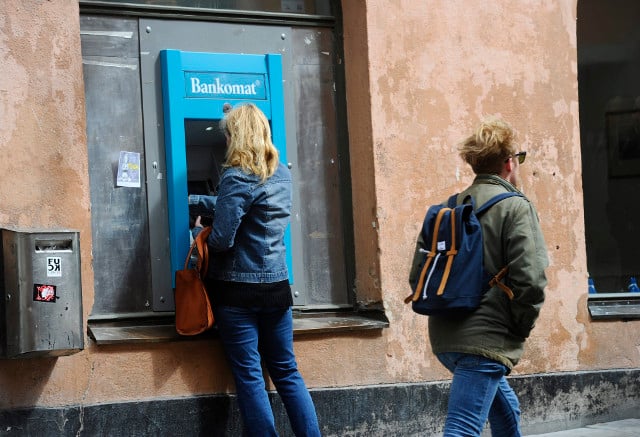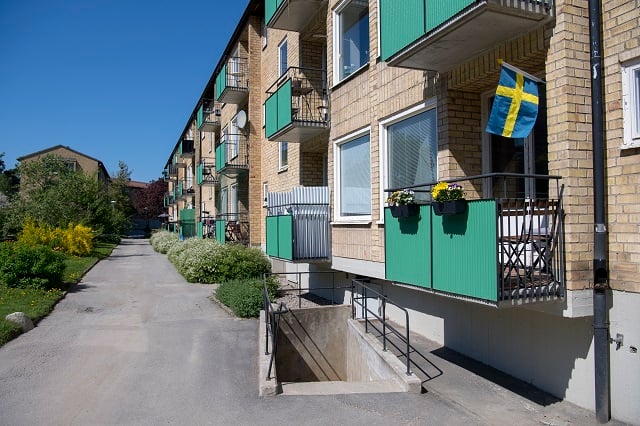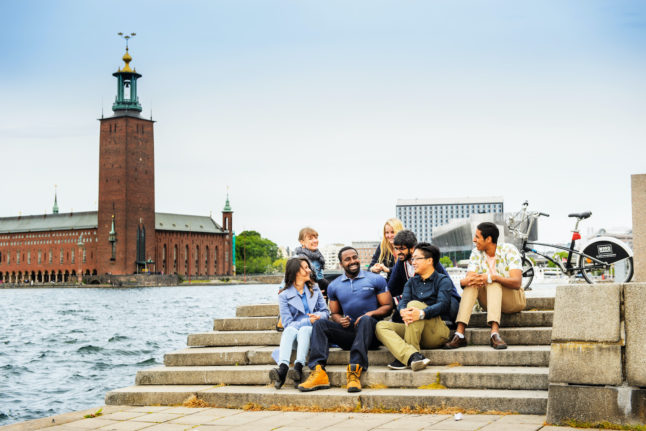In this article from our archives, The Local asked our readers what their top tips were for anyone considering a relocation to Sweden.
One retiree, Bruce Dodson, advised against over-packing for the move.
“Don’t bring everything you own. We brought way too much,” he said, and had an extra piece of advice about electricals: “If you are moving from a 110 volt country, leave your lamps and electrical appliances. Converting to 220 is not worth the trouble.”
Roger Choate, who moved to Sweden in 1971, recommended preparing for the trip by doing shopping overseas for the essentials in order to avoid high Scandinavian prices: “Sweden is expensive. Buy appropriate warm clothing in some cheaper country before moving here.”
Make sure that you check the currency conversion before you arrive, though – Sweden’s currency has dropped in value in recent months so you might be better off buying here if you’re moving from a country with a stronger currency.
Jenny, a teacher, recommended getting apps on your phone to make life easier.
Her top tip was to ask staff at your bank to set up BankID, a digital identification service, and she also suggested using apps for public transport, the Swish payment app, and Blocket or Facebook marketplace to buy furniture, bicycles and other essentials that aren’t easily transported overseas.
But even with a smartphone packed with useful apps, there are some aspects of Swedish bureaucracy that can’t be bypassed.
“What was very striking to me was the fact that one has to wait for almost everything! If you come to live in Sweden, be prepared to wait for documents, to contact institutions/people, to send letters, et cetera,” said Sabrina Trad.

FIND A JOB: Browse thousands of English-language jobs in Sweden
In particular, a recurring issue was the length of time it can take to be issued with a personal ID number, the ten-digit code which acts as a key to many parts of Swedish life. “Sweden will behave as you don’t exist until you get your personal number,” warned Sergei Burtsev. He recommended buying travel insurance to cover at least the first six months in Sweden, a tip which applies to anyone moving from a non-EU/EEA country and who therefore isn’t covered by national health insurance.
Joey, a truck driver in Småland, recommended finding a job before making the move in order to guarantee getting a personal number. “When you come self-funded and don’t plan to work it’s nearly impossible to get a person number. And without that, living a normal life in Sweden can be rather difficult,” he said.
And nurse Annelise Enoksson shared her advice for dealing with the different steps necessary to become fully part of Swedish society: “Make sure you have thought of any questions or advice you might need from offices and organizations (tax office, Swedish for Immigrants classes, the Migration Agency) ahead of time. Write them down and then take your time when communicating with these places.”
“If at all possible bring a friend or family member that speaks Swedish. Even though the employees at these offices speak very good English, things can still get lost in translation when you have specific questions and needs,” Enoksson advised.
READ ALSO:
- Pension hacks: How to make the most of your time in Sweden
- Members’ guide: How to save money despite living in Sweden
- Members’ guide: Know your consumer rights when shopping in Sweden
- Everything you need to know if you lose your job in Sweden
When it comes to the job hunt, one reader warned would-be expats not to expect the search to be easy. “From experience, I wish someone had told me ‘Take it slow if needed but make sure you get very good grades’. If you are not a Swede you have to be among the best of the best to easily get a job,” they said, and also recommended getting a driving licence and learning Swedish as soon as possible in order to increase the job opportunities available.
After ten years in Sweden, Caleb suggested that job searchers create multiple CVs and be open-minded about which jobs they apply for at first. “Finding work can be difficult in Sweden. I had one CV that focused more on menial work experience and another that was more professional in nature. An engineer who can’t find work is unlikely to be hired as a labourer even if he is in desperate need of a job. Being over-qualified is a sure fire way to not get hired in Sweden.”
As well as the job hunt, finding secure accommodation is a surprisingly daunting task for many new arrivals, due to Sweden’s shortage of housing.
One reader, Eneimi, suggested that internationals new to Sweden should “join a bostadkö [municipal housing queue pronto!” These queues put you in line for a rent-controlled apartment, but in the major cities it can take many years before you reach a high enough position to benefit from it. If you think there’s any chance you’ll stay in Sweden long-term, the small annual fee – and in many towns it’s free – could be a good price to pay.
Meanwhile, Jean Francois Lutz, who moved from France to Sweden for retirement, suggested buying property rather than renting if possible. “The buying process is extremely simple and fast compared to USA or France,” he said. “There’s no third party like a notaire or Title Company.”
HOUSING ESSENTIALS:
- A beginner’s guide to buying an apartment in Sweden
- What rights do you have as an ‘inneboende’ in Sweden?
- The Swedish apartments where it is compulsory to chat to neighbours

Emma’s tip was related to the Swedish winter. “Take extra vitamin D tablets during winter! I get quite depressed during winter here and it just makes it harder and you’ll feel more down if you’re low in vitamin D,” she explained.
And several readers highlighted the common struggle of meeting new people in a country regularly ranked as the world’s hardest place to make friends.
“Be open to trying new hobbies in order to become friends with Swedes,” recommended newcomer Truce Jack, who was living in Sweden as part of a university exchange.
“If you wanna make friends go hiking. Most Swedes use to bond through outdoors activities,” said Rusu Eusebiu, who has spent three years in Sweden.
READ ALSO:
- What happens when you move across the world for love, then break up?
- What makes exchange students come back to Sweden?
- Why do so many Swedes live alone?
- ‘Sweden ticks all the boxes – except for one’
Some of the tips related to those unwritten rules of Scandinavian society, some of which may seem insignificant but can cause frustration if you feel as if you’re the only one who wasn’t informed.
“I am from India and I have lived in USA for several years. Unlike these countries, here in Sweden you need to pack your purchases yourself after paying at the counter,” explained software professional Vaibhav Raut.
“We were not aware of this, and then it was a big embarrassment the first time when we shopped, paid at the counter and waited for someone to come to pack our items. Everyone in the queue was looking at us. It is still so embarrassing now when we remember this. So this is my one best tip!”
And one tip came up time and time again: learn the language, particularly if your stay in Sweden will be long-term, and/or if you’re searching for jobs outside the tech industry where English is often the working language.
After more than a year spent in Stockholm, Sarah advised: “The first few months are quite frustrating but after that it’s all worth it!”
And another reader, with 12 years’ experience living in the Nordic nation, said: “Whatever hype you’ve heard, take it with a grain of salt until you test it yourself.”
Originally written by Catherine Edwards in 2019. Updated by The Local’s editorial team in 2023.



 Please whitelist us to continue reading.
Please whitelist us to continue reading.
Member comments